
Images: Allergic contact dermatitis, seborrheic keratosis, dermatophytosis, oro-labial herpes simplex, hereditary trichoepithelioma

Images: Allergic contact dermatitis, seborrheic keratosis, dermatophytosis, oro-labial herpes simplex, hereditary trichoepithelioma
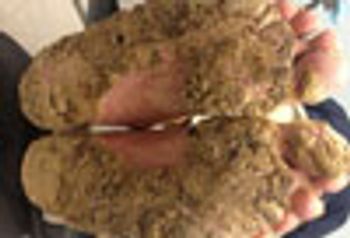
This is a classic keratoderma, which can be due to a variety of congenital defects in keratinization or acquired in association with disease states. Retinoids, systemic and topical, are the treatments of choice.
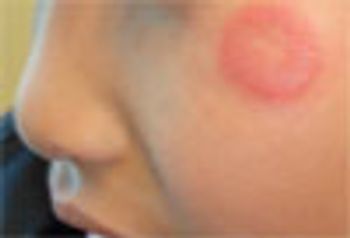
This solitary, very pruritic, annular lesion suggests dermatophytosis. KOH preparation verified the presence of Tinea faciei. This infection is usually associated with contact with a new kitten or puppy.
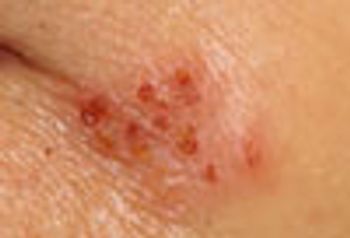
This clustered grouping of small, shallow erosions surmounting a slightly indurated plaque is characteristic for “cold sores.” Because no vesicles were present and the lesions appeared to be crusting over, the patient was advised to apply an OTC cream (docosanol 10%) per package insert instructions.
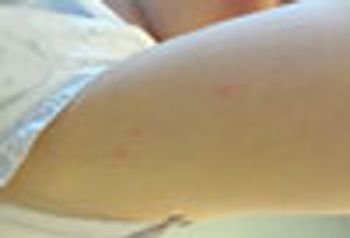
These small, pruritic papules appeared in the morning, which strongly suggests the bite of a nocturnal feeding arthropod. Insect bites arranged in clusters of 3 is typical for, but not diagnostic of, bedbug infestation.
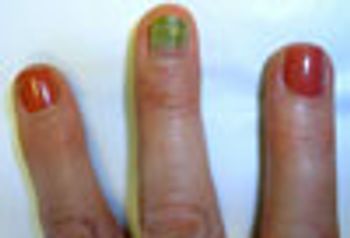
This green discoloration is the result of subungual Pseudomonas aeruginosa colonization. Pathogenic bacteria can enter this space via many causes, including trauma or underlying lesions.
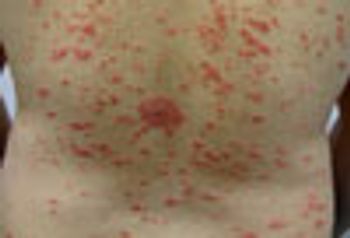
Guttate psoriasis often appears in conjunction with an upper respiratory infection, particularly streptococcal tonsillitis, as it did in this patient. This phenomenon is more common in children.
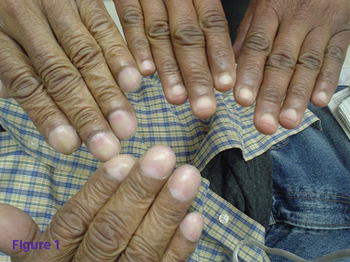
Xanthomata, foreign body aspiration, statin interactions, fingernail clubbing, benign papillary fibroelastoma. Test your skills with this week's 5-question quiz.
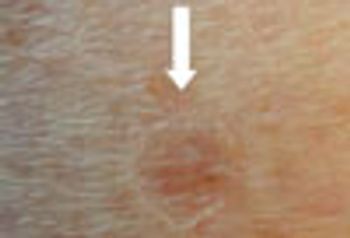
These oval, dyschromic macules surrounded by a palpable scale-like border are pathognomonic of disseminated superficial actinic porokeratosis, a disorder seen usually in those who have had considerable lifelong exposure to sunlight.
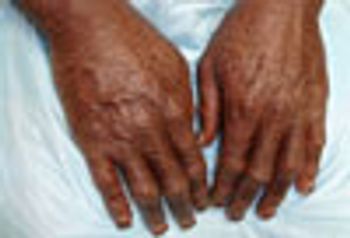
Prominent, pigmented polyangular scales on the extensor surfaces of the arms, legs, and trunk suggested recessive X-linked ichthyosis. DNA analysis demonstrated an abnormal steroid sulfatase gene, which confirmed the diagnosis.
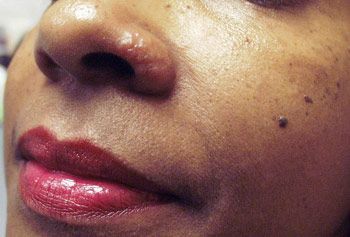
Test your clinical skills in this week’s 5-question quiz.

Eccentric darker pigmentation in this small asymptomatic lesion strongly suggests malignant melanoma. This patient had a history of non-melanoma skin cancer, but was unaware of the questionable growth.
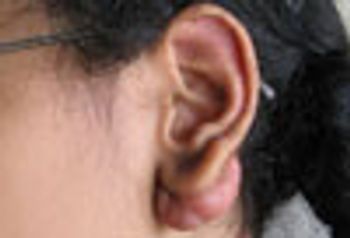
This is a classic keloidal mass, which can occur in any ethic group. Because keloids can be intensely painful, they almost always require removal.
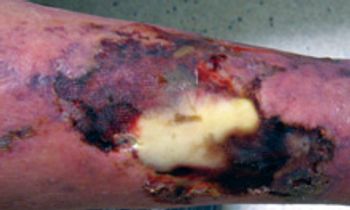
Preseptal cellulitis, myasthenia gravis, squamous cell carcinoma, atheromatous embolism, calciphylaxis are shown here.
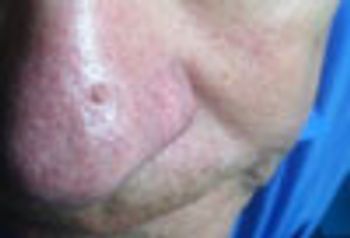
Histopathology showed this neoplasm to be a seborrheic keratosis: it might well have been a hypertrophic actinic keratosis, melanoma, or superficial basal or squamous cell carcinoma.
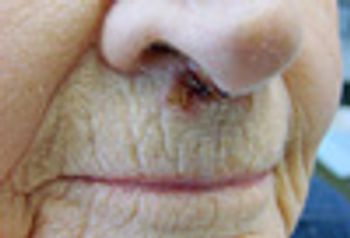
Seborrheic keratosis; retropharyngeal abscess; in situ malignant melanoma; statin-induced myalgias; basal cell carcinoma
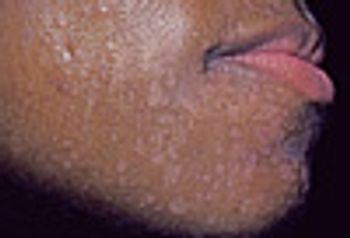
Facial papules; pediatric gastrostomy complications; unexplained trismus; renal abscess.
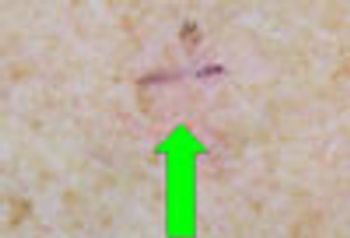
Test your clinical skills in this week’s 5-question quiz.

Carcinoma?; spirometry to assess chronic cough?; neurofibroma?; laryngeal neoplasm? What do you think?
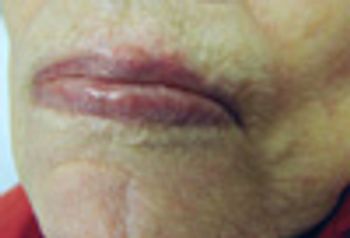
Diabetic myonecrosis; Persistent bacterial bronchitis; basal cell carcinoma; statin-drug pleiotropy; spinal epidural abscess
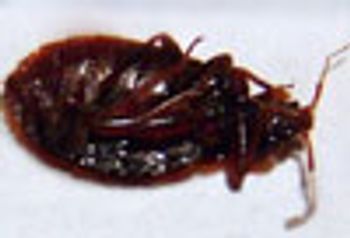
This patient wonders whether the insect he found on his headboard might be responsible for the clusters of pruritic, crusted papules on his legs. This turned out to be a bed bug.

The areas that contained linear erythema, punctuated by stippled pigmentation, and a small round area of stippled pigmentation were biopsied: both showed pigmented basal cell carcinoma.

This new-onset “growth” was removed and shown to be a solitary neurofibroma, which is not an indication of any of the genodermatoses marked by a multiplicity of such neoplasms.
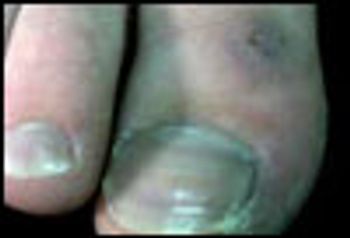
Acne?; Halo Nevus; Solitary Fibrous Tumor; idiopathic chilblains
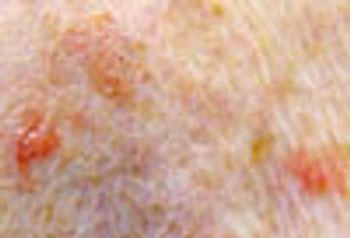
Biopsy of the 3 red “spots” in close proximity showed lichenoid keratosis-a benign lesion, probably related to seborrheic keratosis, which often mimics skin cancer.